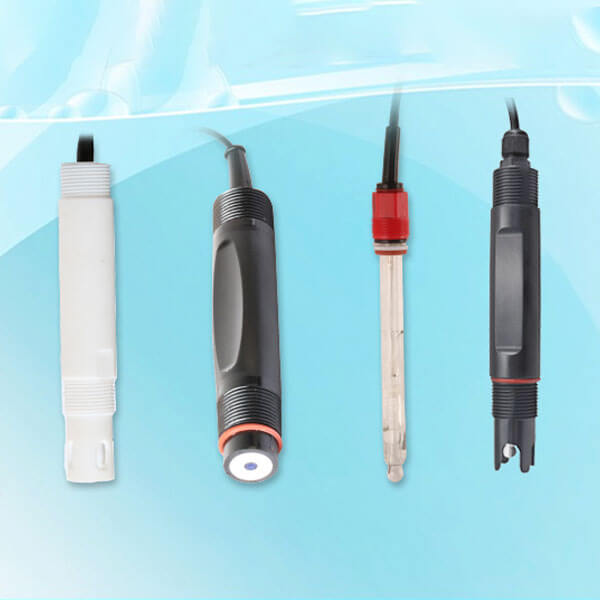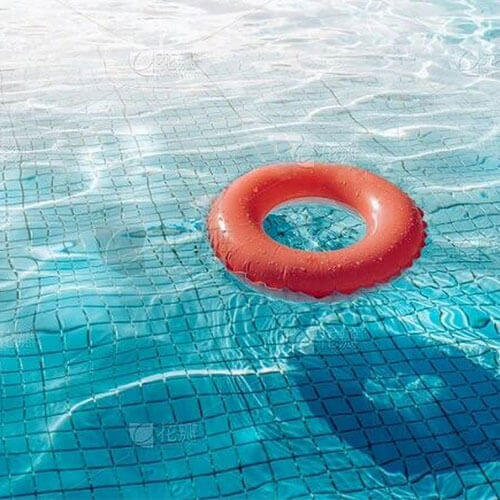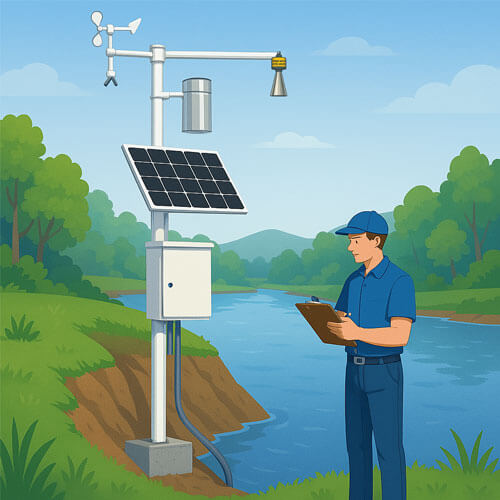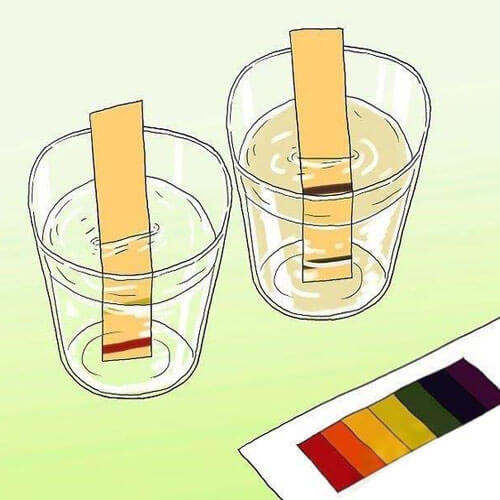Everyone knows that the choice of water quality sensors is very important. In water measurement, the ph sensor is one of the important tools. However, there are many kinds of ph sensors on the market, which makes many consumers wonder “how do I choose the right ph sensor?”, “Where do I start?”. This requires us to know the ph sensor information before using or buying, and then choose the appropriate sensor. In this article, we will introduce you to the types of pH sensors and how to choose a pH electrode.
What is pH sensor?
A pH sensor is a critical tool for measuring the acidity or alkalinity of liquids. It displays the pH value of a solution, which ranges from 0 to 14. pH sensors are widely used in water quality monitoring to ensure the safety and quality of drinking water and wastewater treatment processes.
The standard pH scale is represented by values ranging from 0 to 14. Within this range, higher values indicate decreasing acidity and increasing alkalinity. A pH value of 7 is considered neutral. Values below 7 indicate acidic solutions, with lower numbers signifying stronger acidity. Conversely, values above 7 indicate alkaline solutions, with higher numbers signifying stronger alkalinity. It is important to note that solutions with an exact pH of 0 or 14 do not occur in practical conditions.
Controlling pH during production processes is essential to ensure product quality, as pH levels can affect key characteristics such as appearance and taste. For drinking water, the ideal pH range is typically between 6.5 and 8.5, which is considered safe and suitable for human consumption. Therefore, pH sensors are commonly used in water testing, agriculture, industrial facilities, and laboratories to maintain liquid safety and chemical balance.
4 Types of pH sensor
No matter what application you’re working with, a pH sensor helps ensure that the pH level remains optimal for your specific process—whether you’re dealing with a highly acidic solution or a strong alkaline base. There are several types of pH sensors available for monitoring liquids, including combination sensors, lab-grade sensors, industrial process sensors, and differential sensors.
- Combination pH sensors include both a measuring and a reference electrode. The reference electrode provides a consistent baseline signal, while the measuring electrode detects any variation in pH levels.
- Differential pH sensors are built with three electrodes, including a ground electrode made of metal. Their design minimizes contamination of the reference system, making them highly durable and reliable.
- Laboratory pH sensors often use a plastic housing and 12 mm glass shaft, and are ideal for low-demand tasks such as environmental monitoring or swimming pool testing.
- Process pH sensors, while also using combination sensor technology, are enclosed in a more rugged body with built-in process connectors, making them suitable for continuous operation in industrial environments.
Since pH measurements account for over 25% of quality monitoring tasks in process industries, having accurate and dependable pH sensors is crucial for improving plant efficiency and ensuring operational safety. Our product lineup includes solutions for challenging conditions—such as unstable media, high-viscosity fluids, hazardous environments, and water treatment systems. Click the buttons below to explore our water quality sensors and complete system solutions. If you have a specific application scenario, I can recommend the most suitable sensor type for your needs.
How to choose pH electrode?
Measuring different types of solutions often requires different pH electrodes. Selecting the appropriate pH electrode can greatly improve efficiency and accuracy in your project. On the contrary, using an incompatible electrode not only leads to inaccurate measurements but may also damage the electrode, resulting in increased project costs.
Below, we introduce six commonly used types of pH electrodes:
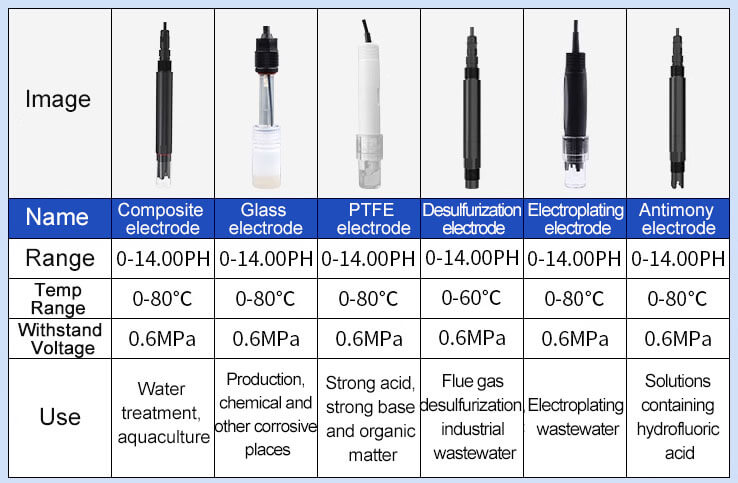
1. Glass Electrode
The glass pH electrode is composed of a special glass membrane, a reference electrode, and a buffer solution. This type of electrode offers high measurement accuracy and rapid response, and is less affected by factors such as water color, turbidity, or salinity. It is widely used in environments that require resistance to corrosive substances, such as in bioengineering, pharmaceuticals, beer brewing, chemical processing, and the electronics industry.
2. Combination Electrode
The combination electrode integrates the glass electrode (measuring electrode) and the reference electrode into a single unit, with a built-in temperature sensor. Its key advantages include a compact structure and ease of use, making it ideal for routine laboratory testing and online monitoring in industrial environments.
3. Desulfurization Electrode
The flat desulfurization electrode features a maintenance-free gel design, ensuring accurate measurements even in high-temperature or high-pH environments. Its flat surface allows for easy cleaning, making it widely used for pH measurement in mineral slurries and flue gas desulfurization processes.
4. PTFE Electrode
The PTFE electrode is made of polytetrafluoroethylene, offering excellent resistance to strong acids and alkalis. The front of the probe is equipped with a circular protective ring to safeguard the glass bulb, providing higher precision and improved linearity. It is widely used in industrial wastewater, highly acidic or alkaline environments, and heavily contaminated water bodies.
5. Antimony Electrode
The antimony electrode uses metallic antimony (Sb) as the sensing material. A thin oxide film (Sb₂O₃) forms on its surface, which reacts with hydrogen ions (H⁺) in the solution to produce a potential change, thereby enabling pH measurement. Due to its strong corrosion resistance, it is suitable for measuring the pH of highly corrosive solutions, including those containing hydrofluoric acid.
6. Electroplating Electrode
The electroplating electrode features a dual-junction design, which effectively reduces contamination of the reference electrolyte. Its extended reference diffusion path significantly increases the electrode’s service life in harsh environments and simplifies maintenance. It is ideal for applications such as wastewater treatment, electroplating wastewater, fermentation processes, and environments with high organic content.
The pH sensor is widely used in chemical processing, wastewater treatment, beverage production, pharmaceuticals, power generation, and the oil and gas sector. The type of pH sensor selected should be based on the specific application requirements. Glass sensors can be customized by choosing the appropriate diaphragm and reference system. In environments where glass breakage is a concern or where high concentrations of organic solvents are present, ISFET sensors are a suitable alternative. For applications demanding high long-term stability and minimal maintenance, enamel sensors are the ideal choice.
Why is the pH sensor important?
When focusing on water pretreatment in manufacturing, this form of water quality control helps eliminate contaminants from incoming water before it’s used in various production stages. By filtering out these impurities, you can enhance operational performance, improve heating and cooling efficiency, and more easily meet required water quality standards. With a reliable monitoring system in place, you can unlock numerous advantages, such as:
- Lower water waste
- Reduced energy consumption
- Compliance with sustainable supply chain goals
- Minimizing unexpected downtime
- Creating a safer and healthier work environment
- Decreasing the use of harmful chemicals
For consumers, poor water quality can lead to health concerns, dry skin, dull hair, rough-textured clothes, and general discomfort. pH sensors play a vital role in monitoring and managing water quality. When the pH level in a water treatment system becomes too high or too low, the treated water may become unsafe.
It’s also important to note that pH instability can be expensive. Correcting imbalances often requires extra chemicals, which can increase costs and lead to system downtime. In most standard wastewater facilities, a pH between 6.5 and 8.5 is considered neutral and safe.
Maintaining water at this optimal pH level and continuously monitoring it can help reduce costs. However, it’s crucial to select the appropriate pH sensors to ensure the best water quality. For instance, incorporating a third electrode in a differential sensor makes it particularly suited for various industrial uses, such as wet scrubbers.
Advantages of our pH sensors
Renke provides complete water quality monitoring solutions to meet the diverse monitoring needs of various clients. Through research on water quality sensor technology and IoT (Internet of Things) technology, we continuously drive the intelligence and automation of water quality monitoring. We offer pH standard solutions and pH buffer solutions to assist users in safely using and maintaining pH sensors, enabling easy and accurate pH measurement results.
As a professional environmental monitoring equipment manufacturer, we offer a wide range of water quality sensors, including pH sensors, conductivity sensors, turbidity sensors, chlorine sensors, dissolved oxygen sensors, COD sensors, ORP sensors, chlorophyll sensors, and various ion sensors. If you have any questions regarding pH monitoring, please feel free to contact us.

